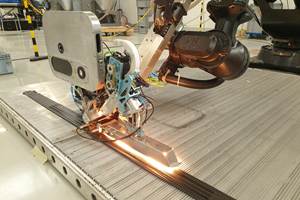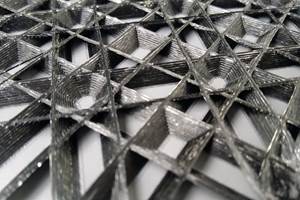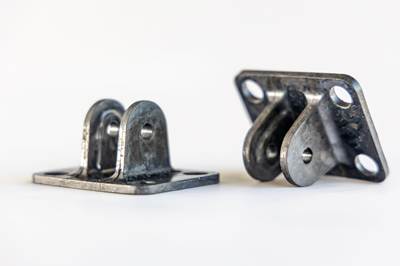Patent-pending Purdue process embeds sensor particles, functionalizes 3D-printed structures
Purdue University researchers have developed a novel wet-mixing method to add sensor particles to 3D printer filaments, which will enable manufacturers to create functional printed parts.
Patent-pending wet-mixing method for 3D-printed part functionalization. Photo Credit: Purdue University image/Brittany Newell
Purdue University (West Lafayette, Ind., U.S.) researchers have developed a patent-pending method to add particles to filament and disperse them evenly through a traditional fused deposition modeling (FDM) 3D printer, which will aid industry in manufacturing functional parts.
Brittany Newell and Jose M. Garcia-Bravo, associate professors in the School of Engineering Technology in the Purdue Polytechnic Institute, and Tyler Tallman, assistant professor in the School of Aeronautics and Astronautics in the College of Engineering, have created a novel wet-mixing method to introduce electrically conductive particles into 3D printing filament polymers. Cole Maynard, who earned his PhD in August, and Julio Hernandez, a doctoral candidate, were pivotal to the research.
According to researchers, traditional 3D printing makes prototypes of parts with no sensing capabilities. Sensors must be added to the part after the fact if assessments are to be made. The process can be thought of as adding sprinkles to cookies after they are baked: The sprinkles exist only on the outside of the cookie. Traditional foil-type strain gauges, which are the most common strain sensors, are adhered to the surface of a printed part by an epoxy resin, Newell explains. However, in this work the sprinkles are added throughout the cookie dough before baking. This means that sensing capabilities are an inherent part of the printed component and enable sensing inside of the component. Unlike sprinkles, these sensors are too small to be seen without a microscope. Their tiny scale is said to enable a printed part to maintain the strength it would have otherwise sacrificed due to large sensors built in, while still achieving fully integrated sensing capabilities.
“With this development, we can continually monitor the structural health of the part with the sensor embedded in the print.”
“Generally, we apply that strain gauge across the full part or apply it to the top and bottom of the part to get information on overall strain across the part,” Newell says. “However, the middle and internal structures are never monitored since the gauges are glued to the surface.”
The Purdue wet-mixing method ensures an even distribution of particles throughout the filament. With the sensors dispersed evenly in the filament, manufacturers and researchers can design parts with a wider variety of shapes.
“The results from this work enable users to create complex 3D structures with embedded strain gauges, rapidly moving traditional prototype pieces into fully functional and structurally assessable parts,” Newell adds. “A limitation of application of 3D-printed parts has been in their durability. With this development, we can continually monitor the structural health of the part with the sensor embedded in the print.”
This method produces materials that are conductive with high uniformity, which can greatly expand the electrical applications of 3D-printed parts and sensor designs. According to Garcia-Bravo “The materials are also tunable, meaning we can adjust the electrical and mechanical properties to optimize the sensor or part for a desired application.”
The novel wet-mixing process is not limited only to sensor conductivity, however. “This work can be further expanded to add other particle types using the same wet-mixing method,” Newell says. “This could include the addition of magnetic particles for electromagnetic fields, fluorescent particles and other functionalities.”
The research was published in the July 2022 edition of the peer-reviewed Advanced Engineering Materials journal, and in the 2020, 2021 and 2022 editions of the American Society of Mechanical Engineers Smart Materials, Adaptive Structures and Intelligent Systems journal. The researchers have received funding from the Naval Engineering Education Consortium (NEEC), a program from the NAVSEA warfare centers aiming to cultivate partnerships between the Navy and higher education institutions.
The researchers disclosed the innovation to the Purdue Research Foundation Office of Technology Commercialization, which has applied for a patent on the intellectual property. Industry partners seeking to further develop this innovation should contact Dhananjay Sewak, dsewak@prf.org, about reference number 69740.
Newell adds that industry partners are being sought to create a process to scale up and further test the method. “We need to increase the batch size to an industrial scale and integrate the customizable aspect of this work with industrial 3D printers,” Newell says. “The range of items that can be produced with these filaments is broad, and testing should be done to expand to new prototypes.”
Related Content
ATLAM combines composite tape laying, large-scale thermoplastic 3D printing in one printhead
CEAD, GKN Aerospace Deutschland and TU Munich enable additive manufacturing of large composite tools and parts with low CTE and high mechanical properties.
Read MoreDrawing design cues from nature: Designing for biomimetic composites, Part 2
As biomimetic design continues to inform composites manufacturing, technologies like 3D printing, tailored fiber placement, braiding and filament winding prove strong candidates for making these structures a reality.
Read MoreTU Munich develops cuboidal conformable tanks using carbon fiber composites for increased hydrogen storage
Flat tank enabling standard platform for BEV and FCEV uses thermoplastic and thermoset composites, overwrapped skeleton design in pursuit of 25% more H2 storage.
Read MoreCombining multifunctional thermoplastic composites, additive manufacturing for next-gen airframe structures
The DOMMINIO project combines AFP with 3D printed gyroid cores, embedded SHM sensors and smart materials for induction-driven disassembly of parts at end of life.
Read MoreRead Next
9T Labs, Purdue University to advance composites use in structural aerospace applications
Partnership defines new standard of accessibility to produce 3D-printed structural composite parts as easily as metal alternatives via Additive Fusion Technology, workflow tools.
Read MoreModeling and characterization of crushable composite structures
How the predictive tool “CZone” is applied to simulate the axial crushing response of composites, providing valuable insights into their use for motorsport applications.
Read More“Structured air” TPS safeguards composite structures
Powered by an 85% air/15% pure polyimide aerogel, Blueshift’s novel material system protects structures during transient thermal events from -200°C to beyond 2400°C for rockets, battery boxes and more.
Read More

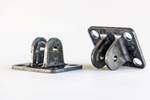


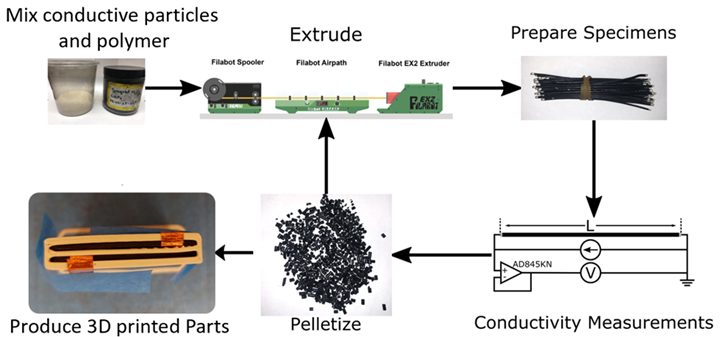




.jpg;maxWidth=300;quality=90)










